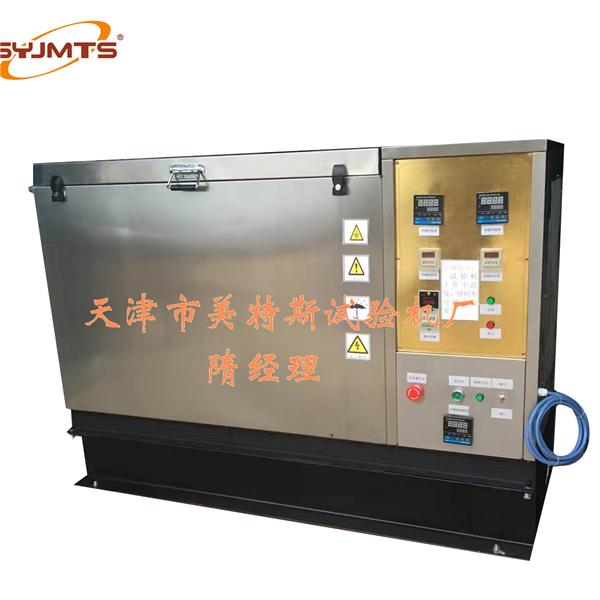Ceramic brick freeze-thaw testing machine - Huaqiang Electronic Network
I. Overview
The Ceramic Tile Freeze-Thaw Testing Machine is a specialized device designed to evaluate the frost resistance of ceramic tiles and similar materials. It meets the requirements of GB/T 3810.12-2006 and ISO 10545-12:1995, which specify the methods for testing the frost resistance of ceramic bricks. This equipment is also suitable for assessing the durability of bricks, cement products, and other construction materials under freeze-thaw conditions.
II. Technical Parameters
1. Temperature range of test area: -30°C to +10°C
2. Test area volume: 680 × 530 × 550 mm
3. Temperature control accuracy: ±1°C
4. Test method: Fully automatic cycle operation based on set number of tests
5. Power supply: 220V ±10%, 4 kW
6. Water temperature control range: 20°C to 30°C

III. Sample Specifications
1. Sample preparation should follow the guidelines in GB/T 3810.12-2006.
2. Take 10 ceramic blocks with an area of at least 0.25 m². Ensure that the samples are free from cracks, glaze defects, pinholes, or surface irregularities.
3. Dry the samples in an oven at 110°C until they reach a constant weight.
IV. Operation and Usage
1. Start by turning on the water source, then activate the main power switch. Open the instrument’s cabinet door and insert the temperature probe into the test chamber. Open the side panel, fill the circulating water tank with approximately 55 kg of water, and place the sample on the designated holder. Position the spray nozzle near the sample and close the door.
2. Use the counter button to set the desired number of test cycles.
3. Set the upper and lower temperature limits for the test area. First, power on the device and adjust the cold cycle temperature to -5°C. Then set the thawing temperature to +5°C using the temperature control knob.
4. Adjust the water temperature in the tank according to the required specifications.
5. Turn on the “Total Power Switch†and the “Refrigeration Switch.†Press the “Start†button to begin the test. The machine will automatically perform freeze-thaw cycles, spraying water when the temperature reaches the set point. After each cycle, the system will record the number of completed tests.
6. After the test is complete, remove the samples and inspect them under a light source between 25 cm and 30 cm. Check for any surface cracks, glaze damage, or edge fractures and document your findings.
V. Troubleshooting
1. If the freezer does not cool after turning on the power: Check if the compressor is running. If not, try switching to manual mode and start the cooling function. If it works manually, the issue may be with the temperature control unit.
2. If the spray nozzle does not release water during the thawing phase: Verify that the water pump is operating. If it is not, switch to manual mode and activate the water spray valve. If the manual operation works, the problem might be related to the temperature controller.
VI. Installation and Maintenance
The testing machine should be installed on a stable, vibration-free surface. After each use, clean the interior thoroughly to prevent contamination. Regular maintenance, such as checking water levels and cleaning filters, is recommended to ensure long-term performance and accurate results.
aluminum phone case,aluminum cell phone case,exclusive alloy protective case,aluminium alloy waterproof
Dongguan Yingxin Technology Co., Ltd. , https://www.dgyingxintech.com